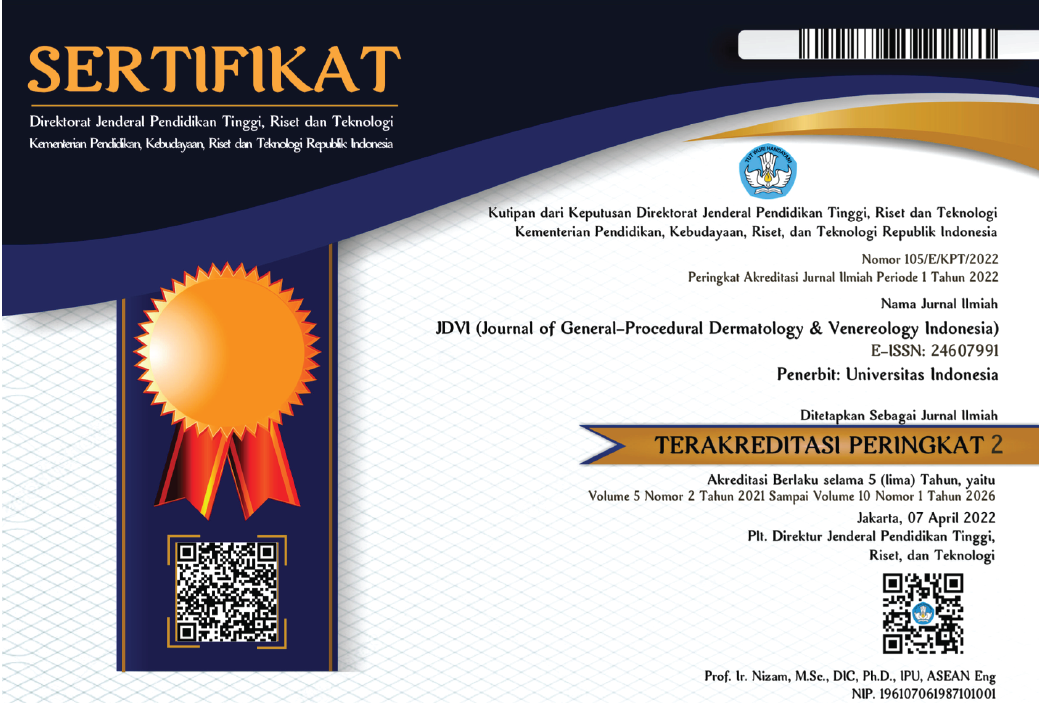Abstract
Background: Cosmetics are a part of life for most of the population and may cause allergic contact dermatitis (ACD), especially on the face, as the primary exposure of cosmetics is on the face area.
Methods: This research was conducted retrospectively using secondary data. The research subjects and demographic data were taken from the registered list of patients at Dermatology and Venereology Outpatient Clinic Dr. Sardjito General Hospital with a clinical picture of facial ACD due to cosmetics. Patch tests were carried out from January 2017 to December 2020.
Results: From three years period, 26 patients were diagnosed with suspected facial ACD due to cosmetics and underwent patch tests. Of the total 26 patients, 3 patients did not show any reaction to the patch test. On the 23 patients who had reactions on the patch test, there were 66 points on the skin that showed a reaction to allergens. Of the 66 points, 37 points gave a positive reaction picture, with the most common allergen causing the reaction being cobalt(II) chloride hexahydrate (n=4, 10.8%). Then, from 29 points that gave doubtful reactions, the allergen that caused the most reactions was potassium dichromate 0.5% (n=4, 13,8%).
Conclusion: The allergens that most often give a positive or doubtful reaction on the patch test of this study are metal compounds (cobalt and potassium dichromate). This study only looks at the patch test that gives a reaction without looking at the clinical relevance related to cosmetics use.
Recommended Citation
Alfieri, Alessandro; Indrastuti, Niken; Febriana, Sri Awalia; Pudjiati, Satiti Retno; and Waskito, Fajar
(2022)
"Allergen profile of facial ACD to cosmetics among patients at Tertiary Referral Hospital in Yogyakarta,"
Journal of General - Procedural Dermatology and Venereology Indonesia: Vol. 6:
Iss.
1, Article 3.
DOI: 10.19100/jdvi.v6i1.347
Available at:
https://scholarhub.ui.ac.id/jdvi/vol6/iss1/3
Included in
Dermatology Commons, Integumentary System Commons, Skin and Connective Tissue Diseases Commons






























